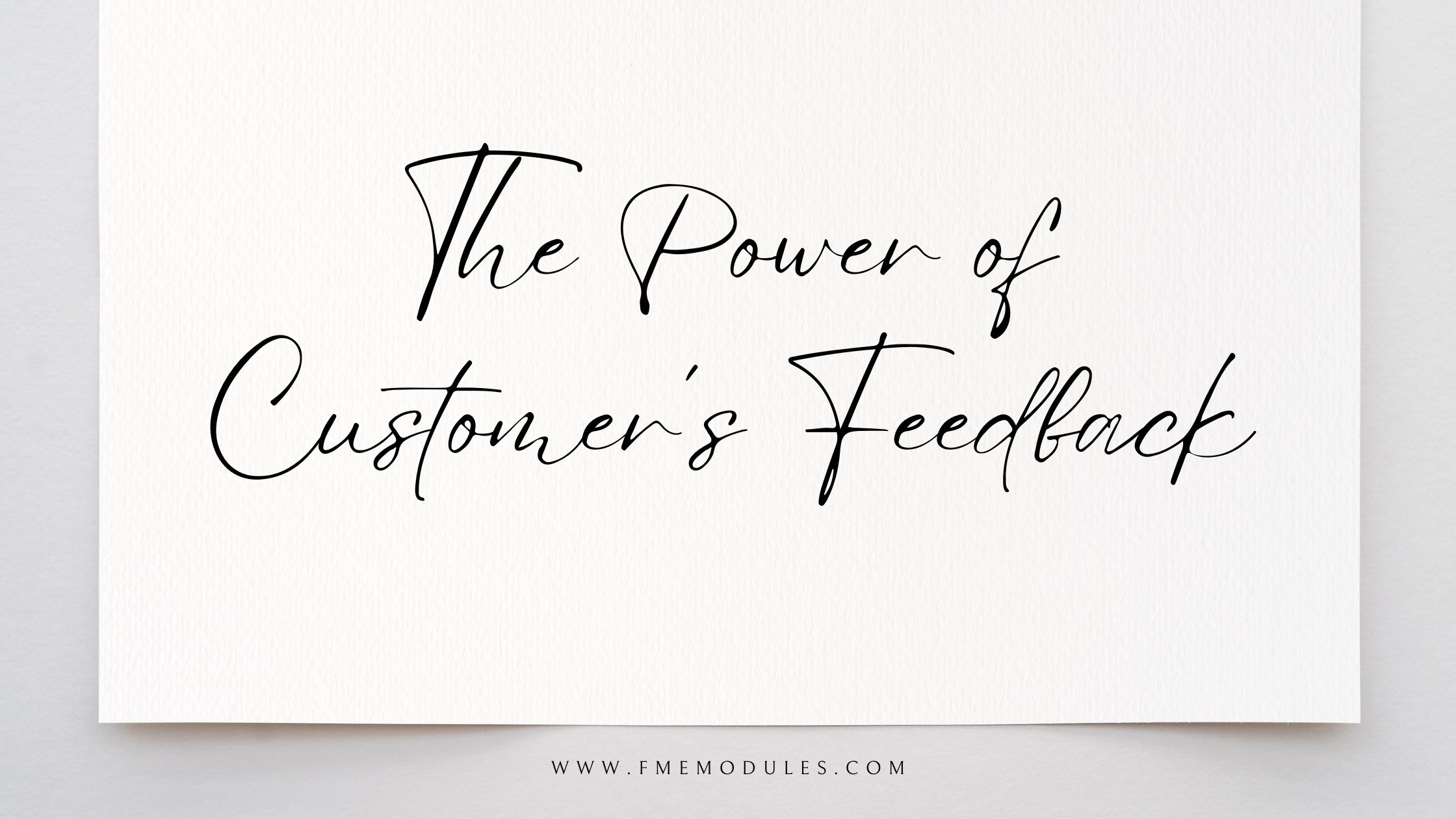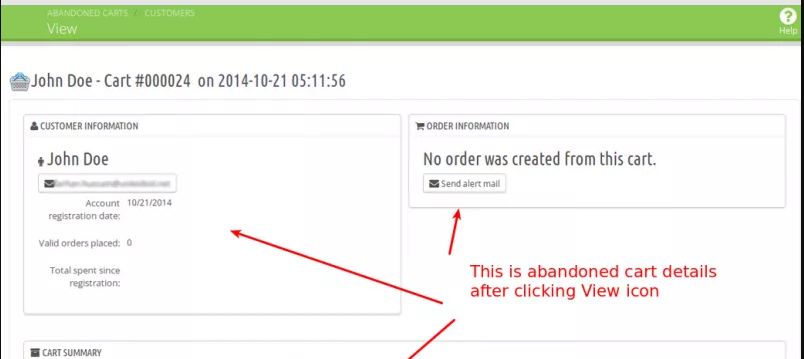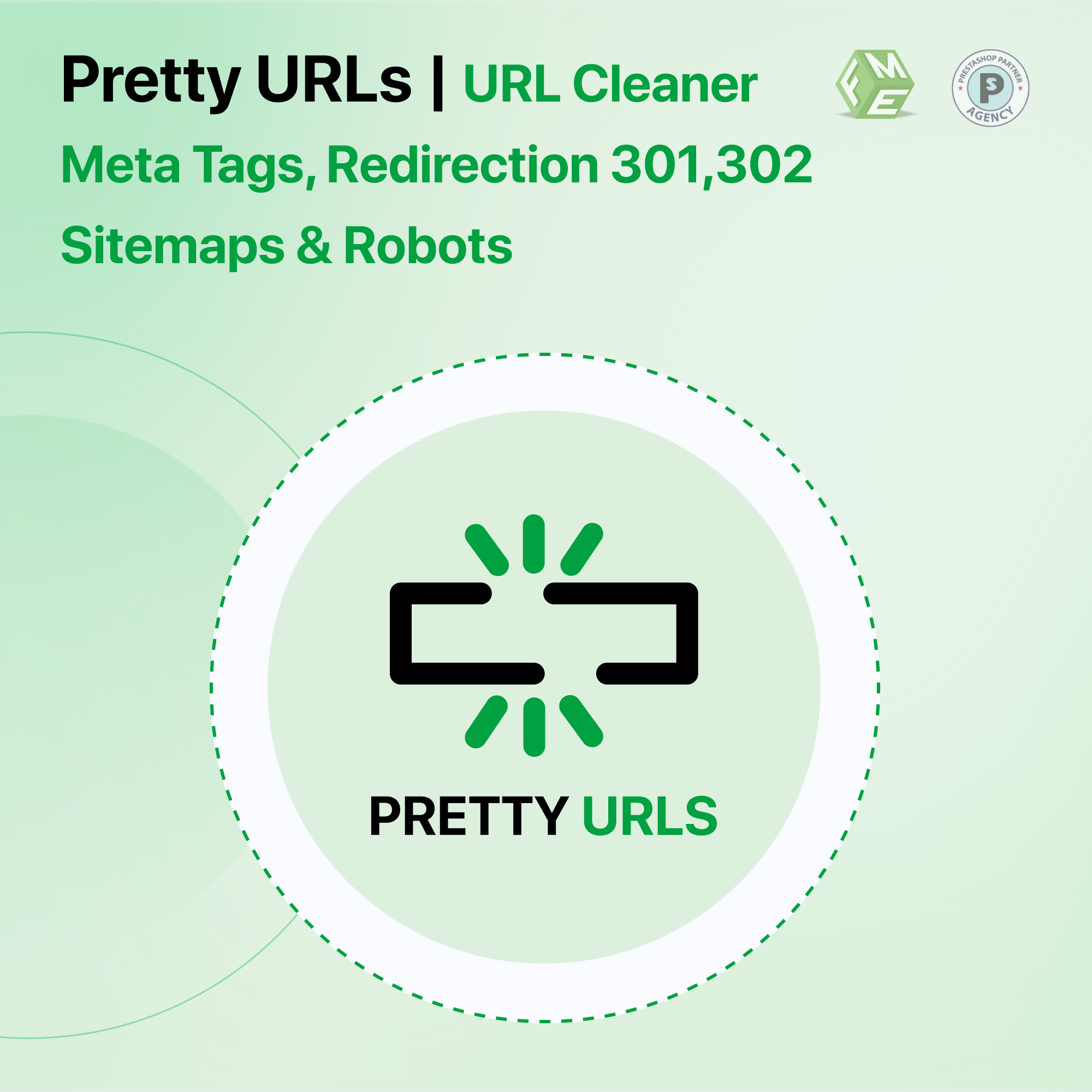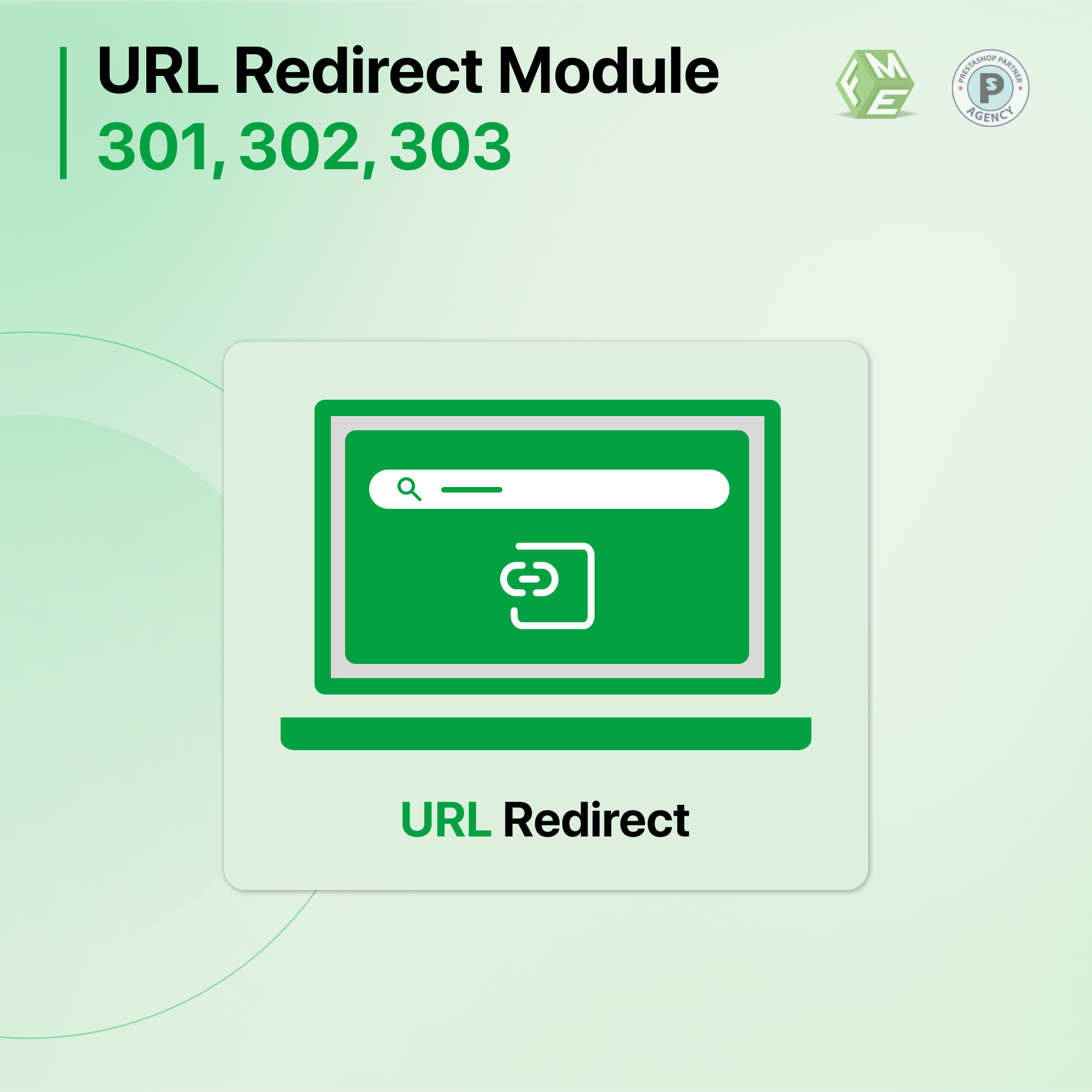How to Create Prestashop SEO Friendly URLs: A Complete Guide

Posted On: Jul 23, 2024
Categories: PrestaShop SEO Best Practices: Guides, Checklists & Tips
Introduction to Prestashop Friendly URLs in SEO
SEO friendly URLs are vital for both user experience and search engine optimization. They help users and search engines quickly understand the webpage's content.
There are several techniques for crafting SEO friendly URLs; some of these include using short URLs, hyphens, and keywords. These practices, along with quality content and strategies, make your webpage rank well. A perfect URL will typically be short, descriptive, and most importantly, relevant.
In this guide, we'll explore best practices, advanced techniques, and tools to create effective Prestashop SEO URLs.
The Importance of Prestashop Friendly URLs in SEO
There are several misconceptions about the role URLs play in Google rankings. URLs alone won’t elevate or establish your ranking (spoiler alert: there isn’t a handbook to ranking); they contribute to the overall ranking of the site.
Search engines use your webpage’s URL to understand its content. Well-optimized pretty URL Prestashop can influence user behavior, which indirectly affects your SEO. Therefore, making SEO-friendly and user-friendly URLs is crucial.
URLs play a significant role in SEO, contributing to how search engines and users perceive your webpage. While URLs alone won't determine your ranking, they work alongside title tags, link anchor text, and content to influence SEO performance.
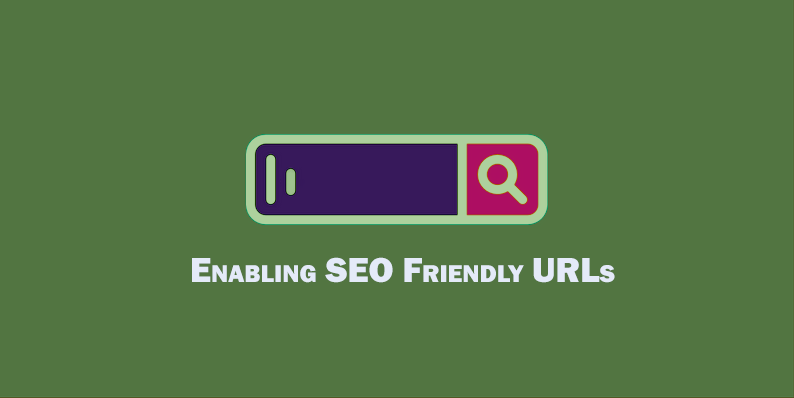
Best Practices for Creating SEO Friendly URLs
1. Use Short and Descriptive URLs
Your URL should contain the keyword you want your page to rank for. Keywords signal to Google what the page is about, as well as provide clarity to the user.
Keep URLs concise and include relevant keywords. Short URLs are easier to read, remember, and share. For example, a webpage about SEO tools should have a URL like:
https://example.com/seo-tools instead of https://example.com/2021/07/all-about-seo-tools-in-2021.
2. Hyphens Over Underscores
Use hyphens to separate words, as search engines recognize them as word separators. Avoid underscores and spaces because they are less readable, can cause errors, and are not recognized as word separators by search engines.
For example, use https://example.com/seo-tools instead of https://example.com/seo_tools.
3. Use Lowercase Letters
Always use lowercase letters to prevent redirects and 404 errors. URLs with uppercase letters can cause issues with duplicate content and readability. For example, use https://example.com/seo-tools instead of https://example.com/SEO-Tools.
4. Avoid Special Characters
Special characters can complicate URLs and cause errors. Special characters (e.g., commas, semicolons, spaces) mess up URLs, making them harder to link and recognized correctly by search engines automatically.
Stick to alphanumeric characters and hyphens.
For example, avoid URLs like https://example.com/seo&tools.
5. Utilize Keywords and Keyword Modifiers
Keyword modifiers refer to the words users put in their search bars to get the optimal result. Incorporate relevant keywords to signal the page’s content to search engines. Adding keyword modifiers like "best," "guide," or "review" can enhance relevance and improve the overall SEO of the page.
For example, https://example.com/best-seo-tools-guide is better than https://example.com/tools.
6. Avoid Dates and Dynamic Parameters
Avoid using dates and dynamic parameters in URLs as they make URLs longer and harder to update. Dynamic URLs can cause duplicate content issues.
For example, use https://example.com/seo-tools instead of https://example.com/2021/07/seo-tools.
7. Use Subfolders Instead of Subdomains
Organize content with subfolders rather than subdomains to maintain site authority. Subdomains can dilute your site’s ranking power. For example, use https://example.com/blog/seo-tools instead of https://blog.example.com/seo-tools.
Advanced Prestashop Friendly URL Optimization Techniques
Eliminate Stop Words
While not always necessary, eliminating common stop words (like "and," "or," "but") can shorten URLs and improve readability. For example, https://example.com/best-seo-tools instead of https://example.com/the-best-seo-tools.
Secure Your Site with HTTPS
Using HTTPS is essential for security and SEO. It builds trust with users and provides a slight ranking boost. Ensure all URLs are secure, for example, https://example.com instead of http://example.com.
Consistent Structure of Pretty URL Prestashop
Maintain a consistent URL structure across your site to help both users and search engines navigate your content more easily. Use a logical hierarchy, for example, https://example.com/category/product.
Tools and Modules for SEO Friendly URLs in PrestaShop
1. Pretty URLs by FME Modules
Pretty URLs remove autogenerated IDs and numbers from product, category, supplier, manufacturer, and CMS page URLs, making them clean and SEO-friendly. Key features include:
- Option to remove language ISO, IDs, and attributes.
- Ability to rewrite URL structure for different page types.
- Automatic redirection of old URLs to prevent 404 errors.
2. Auto Meta Tag Manager
This tool auto-generates meta titles, descriptions, and keywords, ensuring pages are optimized for search engines without manual input. It supports multiple languages and applies to various page types.
3. URL Redirection Manager
Manages URL redirects (301, 302, 303) to maintain SEO equity and user experience. It allows setting triggers based on server type and creating custom redirects.
4. Social Media Integration
Setting up Open Graph protocols for Facebook and Twitter ensures your URLs are properly formatted for social sharing, enhancing visibility and engagement.
5. Sitemap Generation and Robots.txt Management
Generate sitemaps to help search engines index your pages efficiently. Customize robots.txt files to control crawler access, improving site security and crawl efficiency.
Enabling Pretty URLs in PrestaShop
Enabling PrestaShop Friendly URLs
- Log in to the PrestaShop back office.
- Navigate to Shop Parameters > Traffic & SEO.
- Enable Friendly URL by selecting "Yes."
Customizing Prestashop Friendly URLs
- Go to Shop Parameters > Traffic & SEO > Set Up URLs.
- Customize the schema for different pages to remove unnecessary IDs and improve readability.
Conclusion
Creating SEOfriendly URLs is a crucial aspect of optimizing your website for search engines and users. By following best practices and leveraging advanced techniques, you can enhance your site's visibility, usability, and overall performance.
Creating SEO friendly URLs in PrestaShop is a critical component of a robust SEO strategy. Well-structured URLs enhance both user experience and search engine visibility, playing a vital role in how your content is perceived and ranked.
By adhering to best practices—such as keeping URLs short and descriptive, using hyphens over underscores, avoiding special characters, and incorporating relevant keywords—you create a strong foundation for SEO success.
FAQ’s
How do PrestaShop SEO Friendly URLs benefit search engine rankings?
SEO-friendly URLs help search engines quickly understand webpage content, indirectly boosting rankings.
What is the purpose of using hyphens in URLs?
Hyphens improve URL readability and are recognized as word separators by search engines.
Why should dates and dynamic elements be avoided in URLs?
Dates and dynamic elements complicate content updates and can harm search engine rankings by causing duplicate content issues.
What role does the URL Cleaner play in URL optimization?
The URL Cleaner by FMEmodules removes unnecessary elements from URLs, ensuring they are clean, search-friendly, and compliant with SEO best practices.
How does the Auto Meta Tag Manager feature save time?
The Auto Meta Tag Manager automatically generates meta titles, descriptions, and keywords, eliminating the need for manual creation.
Can I remove the ID from URLs without harming SEO?
Yes, but using a module to remove IDs can be costly and may cause errors if other modules require the ID.


